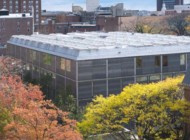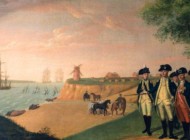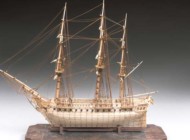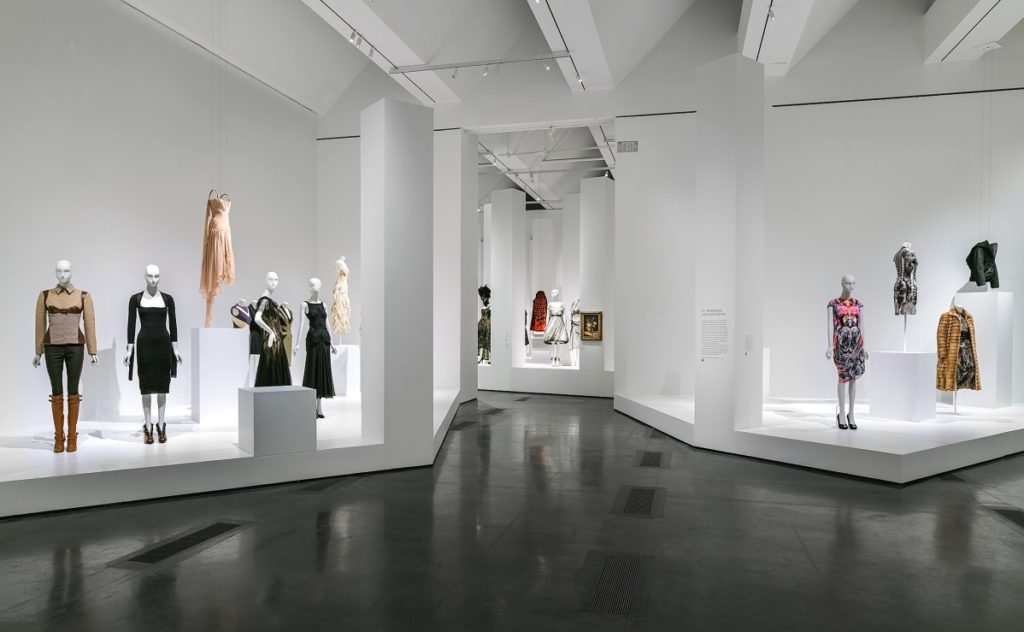
Installation photograph, “Lee Alexander McQueen: Mind, Mythos, Muse,” Los Angeles County Museum of Art, April 24 October 9, photo ©Museum Associates/LACMA.
By Laura Layfer
LOS ANGELES – Renowned artists of all sorts – painters, photographers, sculptors, furniture makers, fashion designers – are often posthumously recognized through museum retrospectives, with the adulation they receive far surpassing any attention or praise given during their lifetime. Recently the Los Angeles County Museum of Art (LACMA) debuted the exhibition “Lee Alexander McQueen: Mind, Mythos, Muse.” Having opened April 24, and running through October 9, this is surprisingly a survey of a different type. Perhaps it is because up until his death in 2010, the British fashion designer was hardly a stranger to controversy and conversation in the realm of his creative output. His runways were legendary, for he understood that staging and theatrics were as important as precision of scissors and stitch. McQueen coveted freedom of expression more than fame or fortune, and as LACMA’s show demonstrates, he continues to be widely credited for that point of view. While LACMA is the third major museum to highlight McQueen, it is the only one to present on the West Coast, and to demonstrate his relationship to fine and decorative arts in a historical perspective, sourced from the museum’s permanent collection, from ancient to modern times.
“The story begins in 2016, when we received the gift of the Collection of Regina J. Drucker and her McQueen ensembles,” says Clarissa M. Esguerra, LACMA’s associate curator of Costume and Textiles, and noting this made LACMA’s holdings of McQueen the largest of any North America public institution. Both Esguerra, and co-curator Michaela Hansen, curatorial assistant of Costume and Textiles, knew immediately they wanted to research for a more extensive McQueen show. LACMA’s main galleries were closed both for construction of a new building (a reopening is slated for 2024), and for shutdowns due to the Covid-19 pandemic. “In retrospect, that also turned into an unexpected opportunity as it paved the way for us to assemble the entire McQueen exhibition using all LACMA’s related objects and curatorial departments, with no works out on loan, and as such it became a real collaboration with our colleagues,” remarks Esguerra.
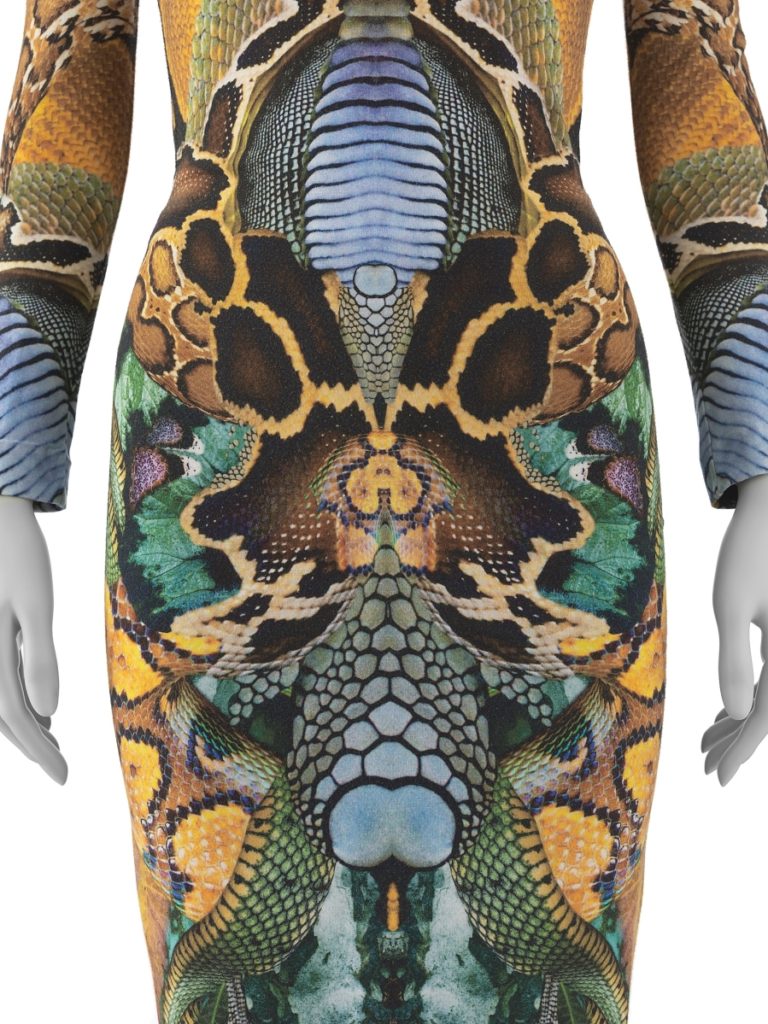
Alexander McQueen, woman’s dress (detail) from the “Plato’s Atlantis” collection, Spring/Summer 2010, Los Angeles County Museum of Art, gift from the Collection of Regina J. Drucker, photo ©Museum Associates/LACMA.
For Drucker, a restorer of historic homes, including a Frank Lloyd Wright residence, LACMA’s concept of cross-disciplines between fashion and art aligned well with her personal approach. In the late 80s, she started buying Fortuny, Balenciaga and Charles James, but soon found a special kinship with McQueen. Drucker was moved by the societal messages woven throughout each piece and presentation. “He was so in touch with the world around him – I mean, in the late 90s, he invited paralympic athlete, Aimee Mullins, to walk in a fashion show, a statement on accessibility and diversity very much lacking in mainstream culture back then,” says Drucker. Her fascination with fashion began as a young teen growing up in Los Angeles, with family roots that trace their arrival in California back to 1927, having fled Guadalajara, Mexico, during the Cristero Rebellion. She remembers the requirement of a daily Catholic school uniform while public school kids could dress as they liked. Those limitations enhanced her interest, particularly as it related to her 70s passion for ballroom dancing. “My mother was a flamenco dancer, and for me, the flare of a fabric and how it would rise with a swirl was all very important,” says Drucker. “I learned a lot about style and the way fabrics moved with me if it was a charmeuse, taffeta, rayon spandex or peau de soie.” Additionally, Drucker’s aunt was a nun alongside Sister Corita Kent, a well-known and influential Pop artist, and contemporary of Andy Warhol. In the 60s, they were removed from their order for having made major alterations to their habits. “The power of dress in my background is strong, and McQueen’s clothing is reflective of a respect for heritage and humanity,” shares Drucker. “He held a mirror up to the complexities of religion, life and death, people’s rights and social justice.”
McQueen was one of six siblings: his father a London taxi driver, and his mother a genealogist. She had heard on a television program of a demand for tailors and suggested her son go to Savile Row to see about a job. If McQueen’s youthful appearance didn’t fit in along the fancy bespoke men’s clothing street, his work ethic and eagerness did. He went on to Italy, was hired by designer Romeo Gigli, and then returned to England in search of a teaching post in pattern-cutting. Central Saint Martins, the arts and design college, turned McQueen down for the instructor role, offering him instead a spot as a student. By that point, he had the practical hands-on training, but lacked a formal education in the field of fashion. He secured money from an aunt, enrolled, and all of the looks presented in his final graduate coursework were purchased by then fashion editor Isabella Blow.
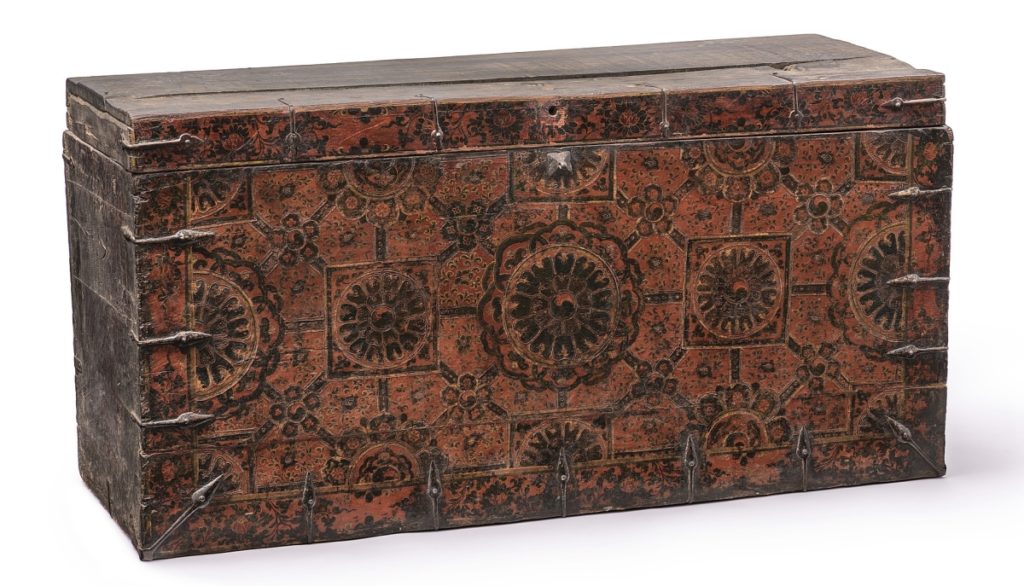
Trunk with brocade design (Kati Rimo), Tibet, Seventeenth-Eighteenth Century, Los Angeles County Museum of Art, gift of Dr Robert Hayward in memory of Ruth Sutherlin Hayward, photo ©Museum Associates/LACMA.
In 1992, with a patron and mentor in Blow, McQueen was able to establish a private namesake label. Over the years, even after being hired as chief designer at Givenchy in Paris, McQueen never swayed from materializing matters of art and history in his dressmaking. “McQueen continues to resonate with a younger generation because he was such a pioneer,” points out Hansen. “Yes, there are many of his Victorian and Gothic and darker references, but also his playfulness, use of alternative materials, new technologies and well-rounded design in general.”
At LACMA’s Resnick Pavilion, the exhibition has been organized by four themes: “Mythos,” “Fashioned Narratives,” “Technique and Innovation” and “Evolution and Existence.” A colonnade structure designed by Michael Maltzan Architecture brings a classical order to looking ahead and behind at the mass of approximately 200 objects varying in size, scale, and above all else, symbolism. It is rare to find a gallery where John Singleton Copley’s “Portrait of Hugh Montgomerie, Later Twelfth Earl of Eglinton,” (1780) works on paper by Spanish artist Pablo Picasso, a Tibetan trunk of brocade design, a Third Century BCE Italian hippocamp, and a man’s coat, waistcoat and breeches, all hold court together with Twenty-First Century garb.
A dress accessorized with a harness-like vest from McQueen’s “Plato’s Atlantis” (Spring/Summer 2010) collection is in the exhibition. “That was dedicated in honor of my friend, Juliana Cairone, a warrior goddess that I feel is watching over the show,” notes Drucker of the late dealer and owner of Rare Vintage, a repository of exquisite vintage clothing. In that specific season, McQueen’s final one prior to his death, he fabricated a science-fiction phenomenon of the tensions between nature and nurture. The digitally printed fabric of another thigh-length dress evokes a moth pattern, with skeletal aspects that appear to morph into a mystical butterfly motif. Based on Darwinism, a skin-tight piece, quite literally “survival of the fittest” in narrow silhouette, is thought-provokingly paired with an urn, circa 1865-87, of serpent form handles and a similar allover decoration of deep jewel-tone colors. The close aesthetics, through different mediums and with more than a century between the two, enhance the idea of how much and how little has changed in the evolution of human and earth. Additionally, the inclusion of “Ocean IV,” 2010, an image of melting ice caps by German photographer Andreas Gursky, reiterates the commentary as it pertains to rising sea levels. It is one more dive deeper into contextualizing McQueen’s garments here as a statement on the climate and global warming.
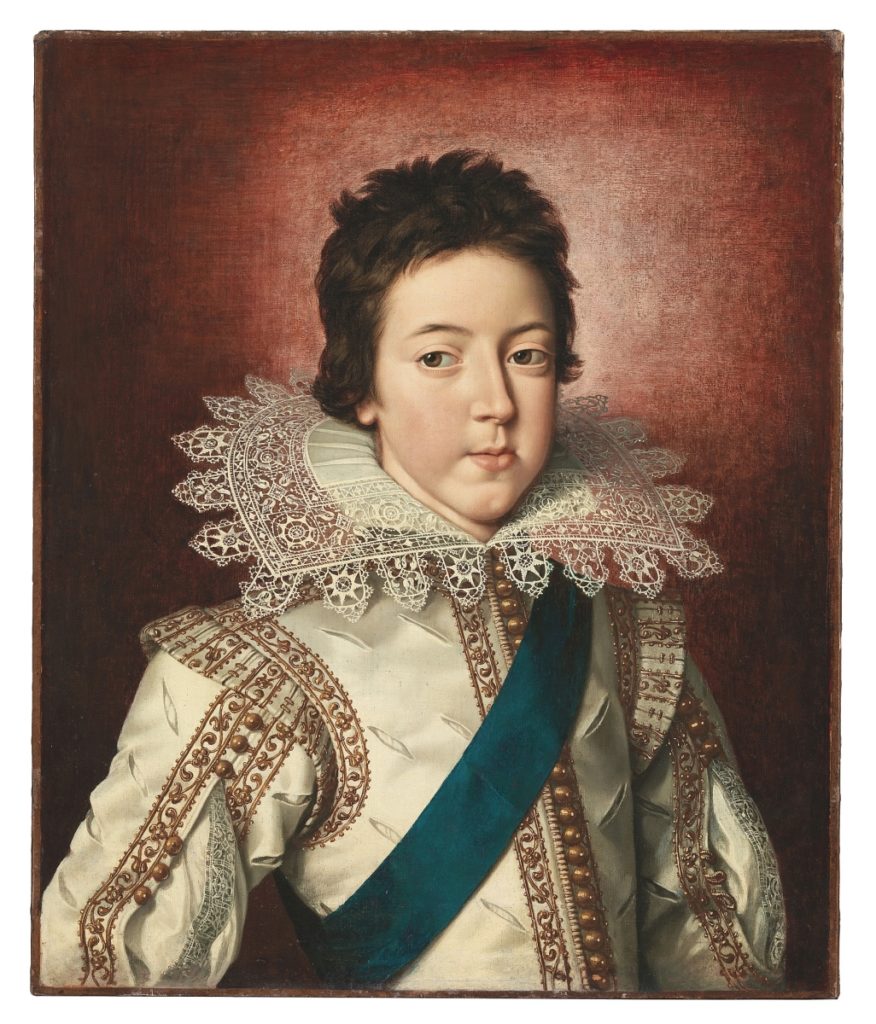
“Portrait of Louis XIII, King of France as a Boy” by Frans Pourbus II, circa 1616, Los Angeles County Museum of Art, gift of Mr and Mrs William May Garland, photo ©Museum Associates/LACMA.
Other storylines threaded in McQueen’s clothes from “The Widows of Culloden” (Fall/Winter 2006-07), a testament to his Scottish roots, is viewed in its likenesses to a depiction of Frans Pourbus II’s “Portrait of Louis XIII, King of France as a Boy,” circa 1616. McQueen’s designs were declarations of the past, present and future. He could protest consumerism and show recycled looks on the runway in a season as he did with “The Horn of Plenty” (Fall/Winter 2009-10), and then approach high art of Italian Renaissance in the collection “Untitled, Angels and Demons” (Fall/Winter 2010) the next. The accompanying exhibition catalog offers quotes in McQueen’s own words. One reads especially close to LACMA’s compilation and tribute to the artist, his peers, and his predecessors. “I spent a long time learning how to construct clothes, which is important to do before you can deconstruct them.”
LACMA is at 5905 Wilshire Boulevard. For information, 323-857-6000 or www.lacma.org.

















